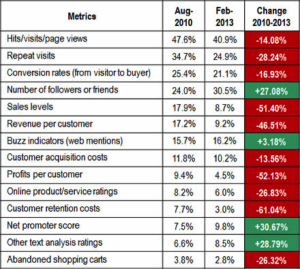For most organizations executing strategy is one of the biggest problems in business. Recent research on What Employees Say Drives Engagement and Performance found that employees rated Execution Management as the third hardest business practice to implement.
Almost every CEO can relate (with emotion) the times they have invested a significant amount of capital to get help with strategic planning. The result of that strategic planning project is typically a flash-in-the-pan of enthusiasm along with a laptop full of analysis and recommendations.
Six months later, can you guess what has happened? Nothing. The file hasn’t been opened and nothing has changed. This experience makes leaders averse to taking the risk of introducing yet another change project that may fail.
- An astounding 90% of well-formulated strategies fail due to poor execution.
- Only 5% of employees understand their corporate strategy.
- As many as 75% of business improvement (change) initiatives to solve these problems fail due to lack of sustainability.
- Only 3% of executives think their company is very successful at executing its strategies, while 62% think they’re only moderately successful, or worse.
The primary reason that projects like this fail is because they were designed as one-time endeavors with a set of recommendations as the main deliverable. The implementation of those recommendations is left to the client organization.
The organization is already deeply ingrained in their previous patterns of work, so implementing all the changes necessary to support the strategic plan is not an easy thing to do. Also, plan development is a quick process completed by a small group of people, but plan execution involves everyone in the organization every single day. Besides, plans are never “right.” No one plan anticipates every possible variable. As you begin implementing a plan, adjustments have to be made.
The first step on the road to sustainable performance improvement is realizing that you need an ONGOING process for building plans and managing their execution. These are not two separate activities – they are tightly integrated and fuel one another. Of the two challenges – developing a good plan and executing it – far more energy and focus have to go to the execution side.
Another key to being execution-oriented is to take broad, long-term goals and make them relevant and actionable in the short term. Meeting a 10-year objective for the organization may require an intermediate target for three years and a one-year alignment review. This one-year goal can then be handed off to a team of people who execute a plan for the next 90 days. Without this kind of execution focus, long-term goals never become relevant to the people on the front lines, and therefore necessary changes never occur.
A separate but related problem that occurs without a focus on execution is that people have no way to cope with the “tyranny of the urgent.” In other words, having a culture where goals and priorities are clear is essential to give people some way to prioritize their work. In today’s world of emails, text, blogs, social media, and cell phones we are besieged with demands on our time. Organizations need an approach for defining goals and holding people accountable to results in a highly reactive culture where teamwork is difficult to realize.
In many ways, organizational fitness is analogous to physical fitness. What it takes to be fit is known. There are very few fitness programs that would not improve your health if you follow them. This is also true in organizations. Most organizations have a plan and vision that are adequate for success. However, they just don’t implement them. Michael Porter, strategic planning expert, says it this way, “I would rather have “B” level strategy with “A” execution than the other way around.”
A version of this post originally appeared here.
Business & Finance Articles on Business 2 Community(36)
Report Post




